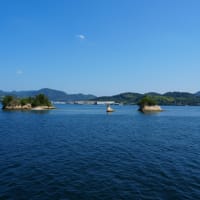The following is from the serial column of Masayuki Takayama, who brings the weekly Shincho released today to a successful conclusion.
This article also proves that he is the one and only journalist in the postwar world.
The Self-Defense Forces for the Nine Powers
Bin Laden had his terrorists hijack four commercial airliners.
Two of them rammed into the World Trade Center in New York and the third into the Pentagon in Washington DC.
The fourth plane, United Airlines Flight 93, was hijacked by the perpetrators and made a U-turn but crashed in the process.
Where was this plane aimed?
Some thought it was the White House in Washington D.C. based on the nose heading. If so, the target was a three-story building with a height of 21 meters.
The target was too small for the perpetrator, who had only flown light aircraft, to maneuver a 115-ton plane into.
It was large and easy to hit. It would cause tremendous damage to American society.
The Indian Point Nuclear Power Plant, located 40 kilometers from New York City on the Hudson River, came to mind as a possible target.
It has three reactors. What would happen if a 115-ton passenger plane crashed into the plant?
The U.S. Nuclear Regulatory Commission (NRC) built a mock-up and tested an F4 Phantom rammed into it.
The building was only slightly damaged, but the reactor containment was intact.
However, the impact of the ramming and the fire damage was significant.
The impact broke the bottom of the nuclear fuel pool beside the reactor and lost all power.
The cooling water did not circulate, the reactor started to run out of control, and it found the nuclear fuel rods to be burning hot in the dried-up pool.
If these assumptions are correct, 44,000 people in the vicinity will die in the initial stage of the disaster, and ultimately 500,000 people within an 80km radius will be killed.
In other words, it would have turned the entire Manhattan area into a city of death if the No. 4 planes had crashed into the room.
In 2005, the NRC issued a remedial order requiring each nuclear power plant to install multiple, robust backup power sources.
The U.S. government also established a new Department of Homeland Security (DHS). In cooperation with the FBI and the Department of Defense, took measures ranging from surveillance of strange foreigners to thorough protection of nuclear facilities.
It also decided that it would shoot down any civilian aircraft hijacked by the government without hesitation.
The order for improvement was also sent to G.E., but TEPCO and other companies that installed G.E. light water reactors were not informed.
If it had informed them, the loss of power supply could have been avoided six years later when the tsunami of March 11 struck.
The accident was a disaster caused by human neglect brought about by irresponsible U.S. companies.
Misfortune has befallen TEPCO's Fukushima power plant.
Naoto Kan created a new Japanese version of the Nuclear Regulation Authority (NRA) and appointed amateurs who know nothing about nuclear power or terrorism as its members.
For some reason, the NRC teamed up with the Seismological Research Institute to demand earthquake and tsunami countermeasures.
They had a meaningless Great Wall built around the plant.
As for the anti-terrorism measures assumed that a passenger plane weighing 200 tons would enter the plant, which is more than the U.S. assumption. We demanded that the buildings be reinforced to withstand this.
If that happened, the impact and fire would be enormous. If the administration building burned, it would destroy the cooling water intake pipes.
That's why they had a 50,000-ton water reservoir, and an underground control room built 100 meters underground.
There is also the possibility of terrorist attacks from above ground, so it ordered them to deal with that as well.
The Regulatory Commission recently punished TEPCO Kashiwazaki for its "inadequate" anti-terrorism measures, but that is something the government should be doing.
Terrorist planes should be shot down by SDF planes.
The Japan Ground Self-Defense Force can take care of the ground attack.
But the regulatory commission wants the nuclear power plant to bear the burden of protecting itself.
The total cost of constructing the Great Wall of Meaninglessness and the terrorist alert reached several hundred billion yen per unit.
As a result, the cost of nuclear power plants has gone through the roof.
According to a recent METI calculation, nuclear power plants are now more expensive than solar panels.
In the past, the cost of nuclear power plants was less than 5 yen per kilowatt.
It allowed for a stable supply of cheap electricity to factories all over Japan, and the nuclear power plant town was able to keep its hands full.
All the buildings in the cities and towns around Fukushima were built with TEPCO's money.
Thousands of billionaires were born from TEPCO's work.
Even after the accident, TEPCO's expenses continued, and many people have become millionaires due to the disaster.
Even so, nuclear power plants could still provide a stable and inexpensive supply of electricity, but the Regulatory Commission finally shut them down.
At this point, why don't the government station Self-Defense Forces with anti-aircraft missiles at each nuclear power plant so that they can provide cheap electricity?


















